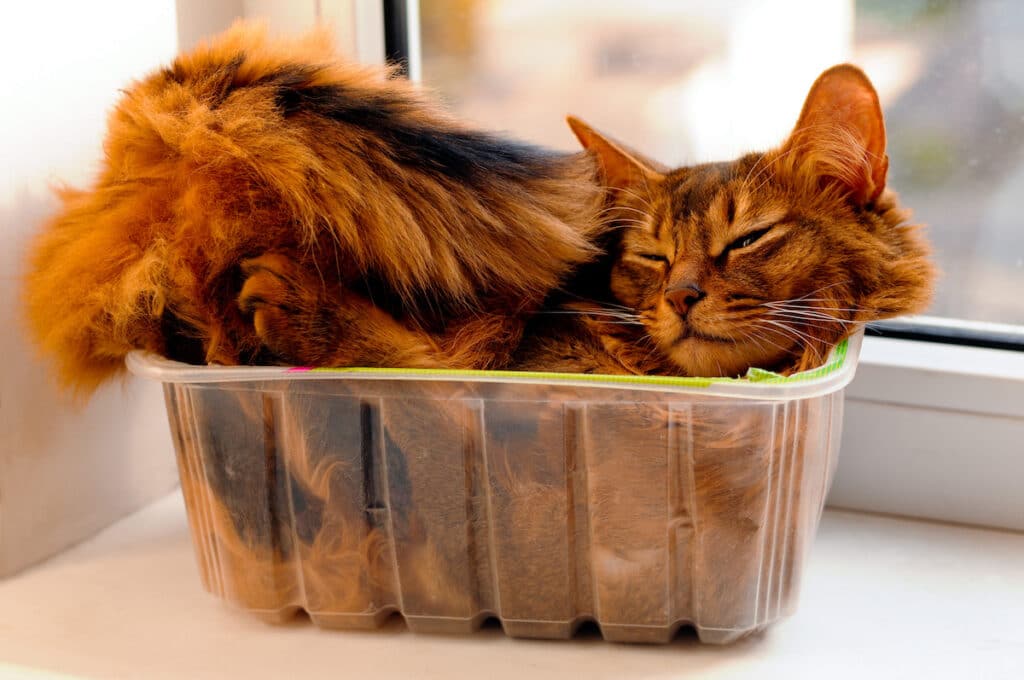Cats are incredibly balanced and agile animals. But why are they so flexible? The 53 vertebrae that cats have help them to be flexible. Cats are fascinating pets for a variety of reasons, more so than many other animals. With the hope that you will learn something new about your feline friend, we will go over the main causes of cats’ flexibiliy in this article.
What Makes Cats So Flexible
The Spine Makes Cats So Flexible
Cats’ spines are extremely elastic and flexible. This enables them to stretch in unusual positions that many other animals, such as dogs or humans, are unable to accomplish. Cats are renowned for having a variety of stretch poses that give the impression that they are moving precisely. Cats can also “liquefy” themselves, which is how they are able to sleep in unusually odd positions. You may have even observed your cat sleeping in a small area and appearing to tightly curl up while seemingly unconcerned.
The Shoulders Make Cats So Flexible
In contrast to dogs and people, cats’ shoulder blades are connected to the rest of their bodies by muscles rather than bones. Cats’ bodies can grow longer and more flexible thanks to the. They should walk with their blades moving with each step for the same reason. Their slack shoulder blades help them hunt and increase their ability to pounce on their prey.
Vertebrae Make Cats So Flexible
Humans only have 33 vertebrae in each of their individual spine bone disks, compared to the 53 vertebrae in a cat’s (including its tail). Cats have more vertebrae than humans do, which allows them to rotate their bodies at an angle of 180 degrees as opposed to about 90 degrees for humans. This means that cats can easily twist and turn their bodies twice as much as humans can.
The Collarbones Make Cats So Flexible
Cats can flatten their bodies to fit into small spaces thanks to their tiny collarbones. Additionally, it aids in keeping them in a crouching pounce position, keeping their body low to the ground and their muscles alert and ready to pounce at any time.
Why Are Cats So Flexible?
Ambush Predators
The adaptable body of a cat makes it easier for them to stalk, pounce, and catch unaware prey. Cats are natural predators of smaller animals like birds and mice, so their bodies have evolved to help them with their hunting abilities. Your cat will extend and flex its back while hunting to lengthen its spines. This enables them to run for brief intervals with extremely long strides at a speed of 20 to 30 mph. They can crouch beneath a bush to observe their prey and lower and narrow their shoulders to fit into small spaces.
Cleaning
Cats are hygienic creatures that take advantage of their flexibility. They can easily clean different parts of their bodies and get rid of odors that might draw predators thanks to their 180-degree rotating torso.
Agility
A cat’s flexibility allows it to jump nine times higher than it is tall, and it almost always lands on its feet. Because of the way their spine and body are built, they can brace for impact without getting hurt and land quietly and gently. This is required when cats leap from great distances, such as trees, or in the case of house cats, from high surfaces and tables. Your cat may arch its back while flying and extend its legs, but when it lands, the legs will naturally bend to accommodate the landing without hurting the cat.
Balance
The tail is connected to the cat’s spine. A cat’s balance and posture are greatly influenced by its tail. Your cat can move their body to pass through tight spaces without falling by extending their tail. Cats can walk along tree branches without tripping in the wild.














